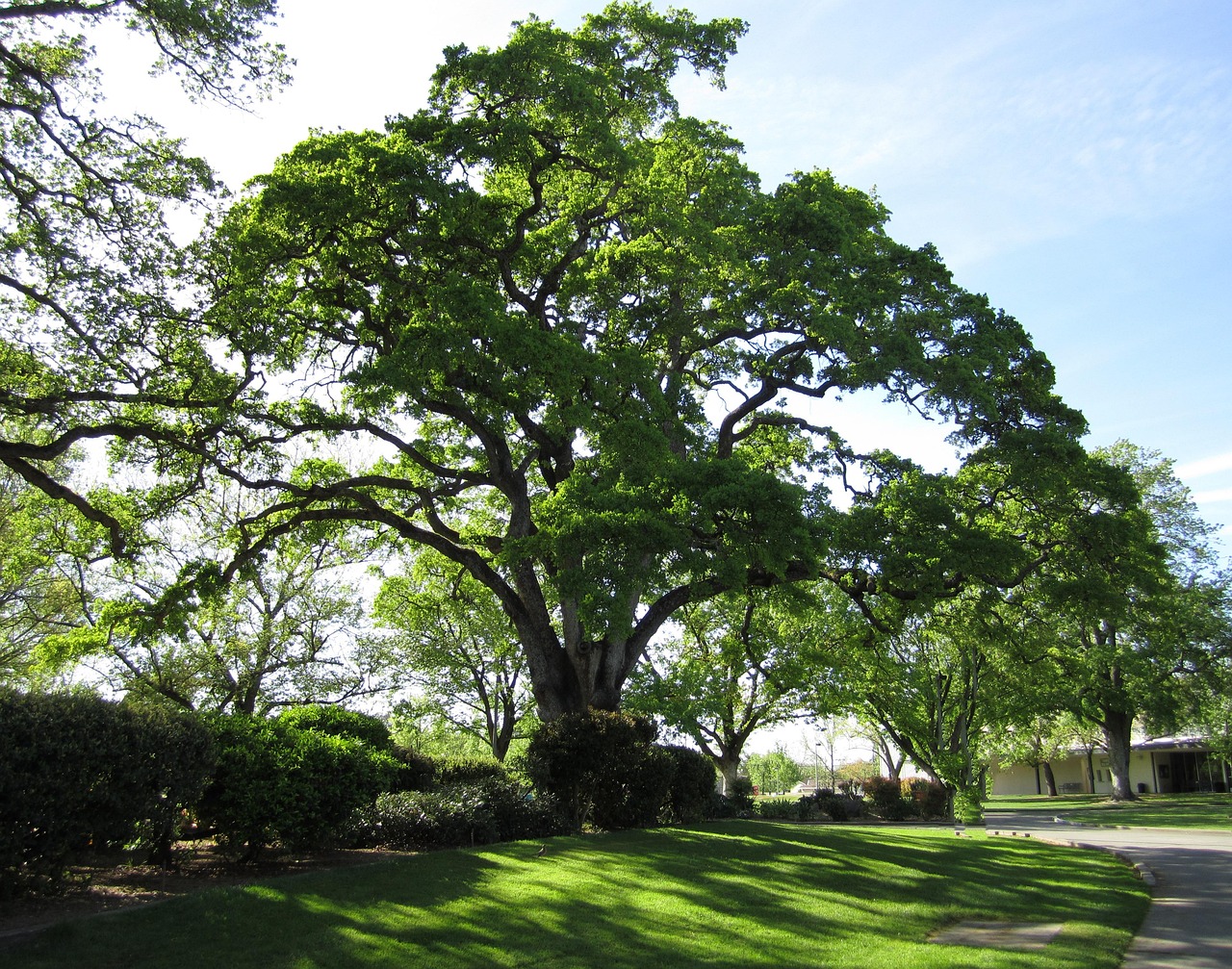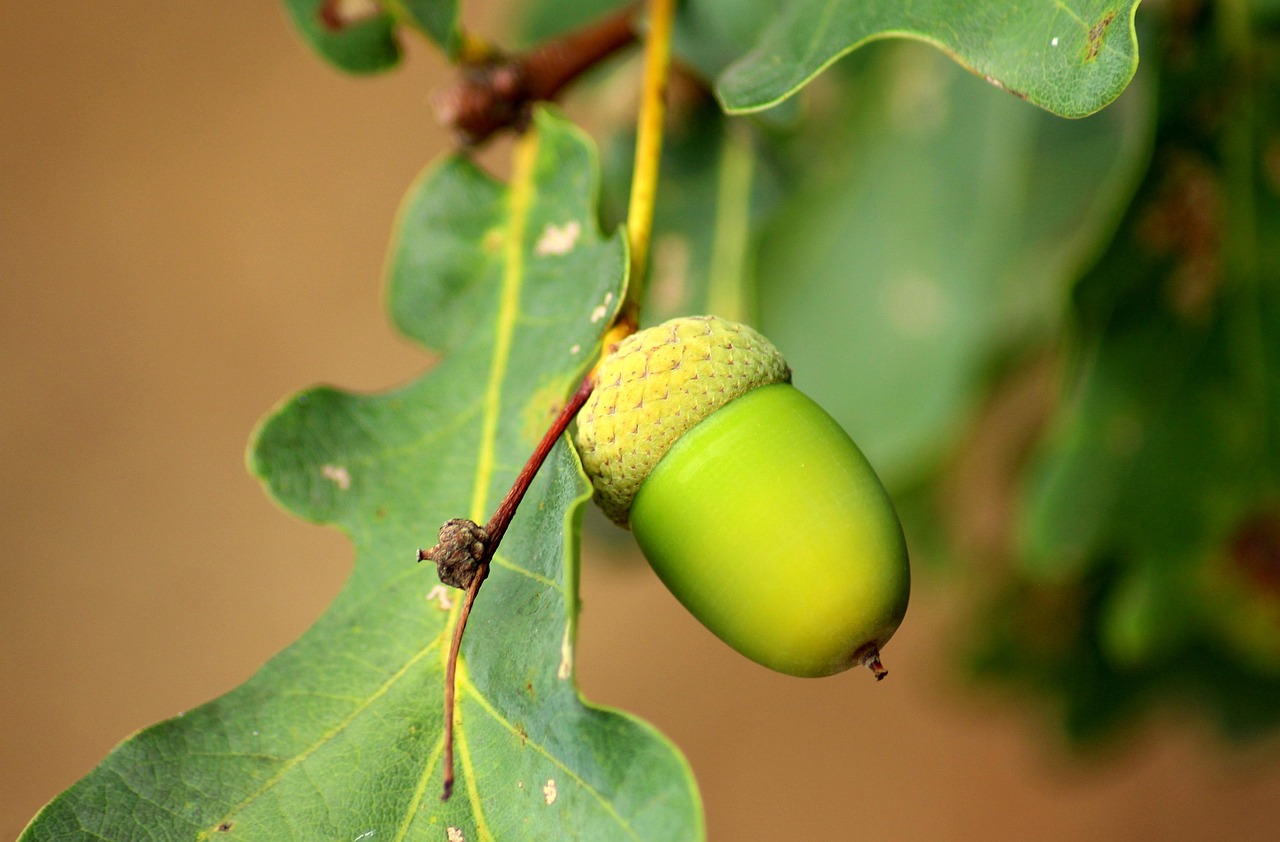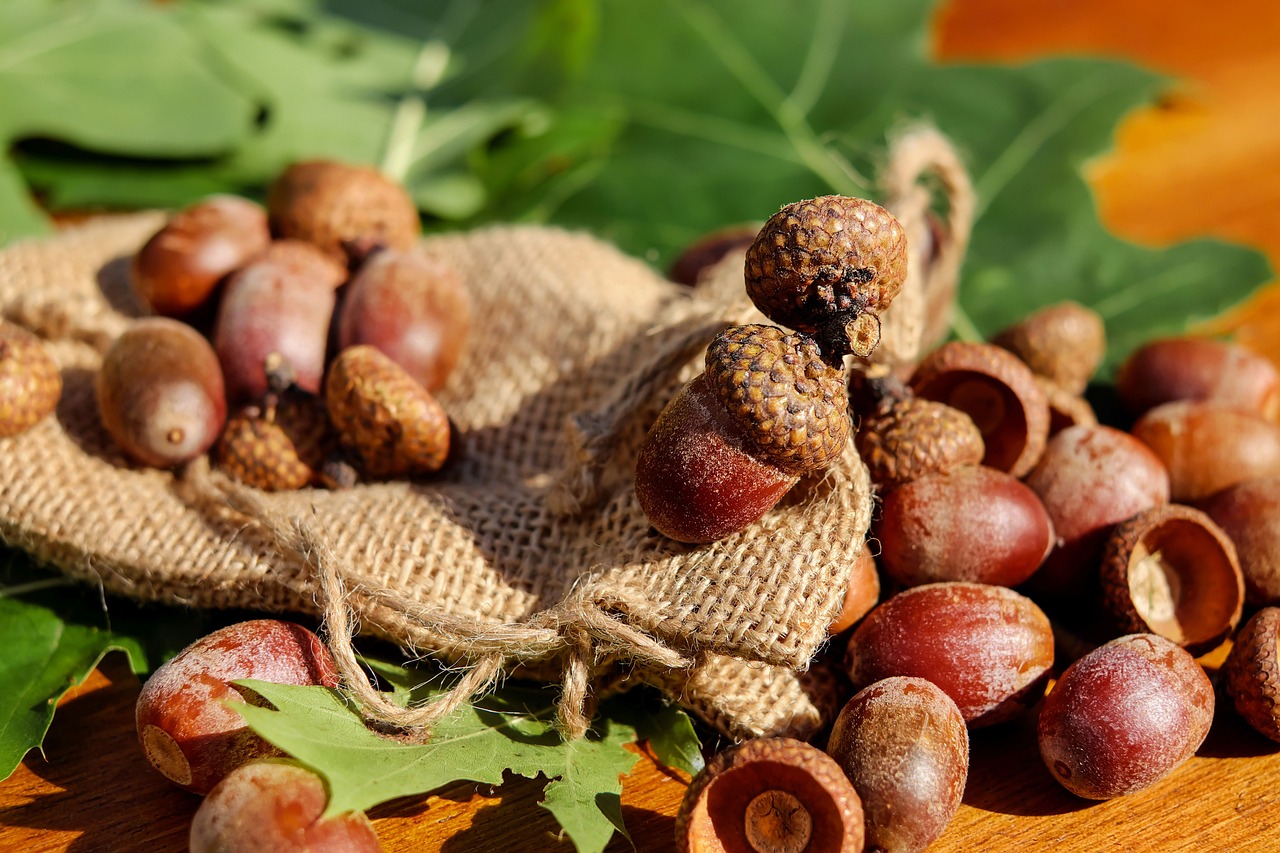The Live Oak tree (Quercus virginiana) typically experiences a moderate growth rate, averaging about 1 to 2 feet per year. This growth rate can vary based on environmental conditions, soil quality, and care provided.
Understanding Live Oak Trees
Live Oaks are renowned for their majestic stature and sprawling branches, making them a popular choice for landscaping and as shade trees in many regions. They are native to the southeastern United States and are particularly valued for their strength and durability. The dense canopy of Live Oak trees offers extensive shade, making them ideal for parks, yards, and urban areas.

One of the defining characteristics of the Live Oak is its evergreen foliage. Unlike many other oak species that lose their leaves in winter, the Live Oak maintains its leaves, providing year-round greenery. This trait enhances their appeal in landscapes where color and shade are desired throughout the seasons.
Live Oaks thrive in a variety of soil types, though they prefer well-drained soils with good moisture retention. They are also known for their resilience to drought conditions once established. Their extensive root systems help them access water deep underground, allowing them to withstand dry spells better than many other tree species.
Growth Characteristics of Live Oak Trees
The growth rate of a Live Oak tree is influenced by several factors, including soil type, climate, and maintenance practices. Below are some key characteristics that affect their growth:

- Soil Quality: Well-drained soils rich in organic matter promote healthy growth.
- Water Availability: Adequate watering during the first few years is crucial for establishing a strong root system.
- Sunlight Exposure: Full sun exposure enhances growth and leaf production.
- Spacing: Proper spacing from other trees allows for better airflow and light access.
Growth Rate Comparison
To give a clearer picture of how Live Oaks compare to other tree species in terms of growth rate, the following table outlines the average annual growth rates of several popular shade trees:
| Tree Species | Average Growth Rate (Feet per Year) |
|---|---|
| Live Oak | 1 to 2 |
| Red Maple | 2 to 3 |
| Sugar Maple | 1 to 2 |
| White Oak | 1 to 2 |
| American Elm | 3 to 4 |
This table illustrates that while Live Oaks have a moderate growth rate, there are other species that can grow faster. However, the longevity and sturdiness of Live Oaks make them a worthwhile investment for shade and aesthetics in a landscape.
The resilience of Live Oaks allows them to adapt well to various environmental conditions. They can tolerate salt spray and are often found along coastal areas, further enhancing their popularity in seaside landscapes. Their adaptability makes them suitable for urban settings as well, where they can withstand pollution and compacted soils.

Care Requirements for Optimal Growth
To ensure that Live Oak trees achieve their full potential growth rate, proper care is essential. Here are some key care tips:
- Watering: Regular watering during dry spells is vital, especially for young trees.
- Mulching: Applying mulch around the base helps retain moisture and suppress weeds.
- Pruning: Pruning should be done carefully to maintain shape and health without over-pruning.
- Pest Management: Monitoring for pests and diseases is crucial to prevent damage.
By understanding the growth rate and care needs of Live Oak trees, gardeners and landscapers can create environments that support their development into robust shade providers. The combination of their aesthetic appeal and practical benefits makes them a favorite among both homeowners and city planners alike.
Environmental Factors Affecting Growth
The growth rate of Live Oak trees is significantly influenced by environmental factors. Understanding these factors can help in selecting the right location for planting and ensuring optimal growth conditions. Key environmental aspects include temperature, sunlight, and soil composition.

Temperature
Live Oak trees thrive in warm climates, typically found in USDA hardiness zones 7 to 10. They prefer temperatures that rarely drop below 10 degrees Fahrenheit. Extreme cold can hinder their growth and development. During the established growth phase, a moderate temperature range of 70 to 90 degrees Fahrenheit supports healthy growth rates.
Sunlight
These trees require full sun to flourish. Ideally, they should receive at least 6 to 8 hours of direct sunlight daily. Insufficient sunlight can result in slower growth and sparse foliage. When selecting a planting site, it is crucial to ensure that the area is unobstructed by taller buildings or other trees that might cast shade.
Soil Composition
The ideal soil for Live Oaks is sandy loam or clay loam that is well-drained. These trees can tolerate various soil types but do not perform well in compacted or poorly draining soils. Testing soil pH can also be beneficial; Live Oaks prefer a slightly acidic to neutral pH range of 6.0 to 7.0.
Common Pests and Diseases
While Live Oaks are generally resilient, they are susceptible to certain pests and diseases. Identifying these threats early can prevent significant damage and ensure healthy growth.
Pests
Some common pests that affect Live Oaks include:
- Oak Wilt: A fungal disease that can infect and kill trees rapidly.
- Gypsy Moths: Caterpillars that consume leaves, leading to defoliation.
- Aphids: Small insects that feed on sap, weakening the tree and causing leaf curl.
Diseases
In addition to pests, Live Oaks may face threats from diseases such as:
- Fungal Infections: These can cause root rot or leaf spot, affecting overall health.
- Bacterial Leaf Scorch: A condition that leads to browning leaves and premature leaf drop.
Planting Techniques for Optimal Growth
When establishing a Live Oak tree, proper planting techniques are vital for ensuring healthy growth and longevity. Following these guidelines can enhance the tree’s chances of thriving in its new environment.
Site Preparation
Before planting, prepare the site by removing any grass, weeds, or debris within a 3-foot radius of the planting hole. This helps reduce competition for nutrients and water. Dig a hole that is twice as wide as the root ball and just as deep, allowing ample space for the roots to spread out.
Planting Steps
- Place the Tree: Position the tree in the hole so that the root flare is level with or slightly above the surrounding soil.
- Backfill Soil: Fill the hole with native soil, gently tamping down to eliminate air pockets. Avoid adding fertilizers at this stage as it can stress the young roots.
- Water Thoroughly: After planting, water the tree generously to help settle the soil around the roots.
- Add Mulch: Apply a 2- to 3-inch layer of mulch around the base to retain moisture and suppress weeds.
Long-Term Care Practices
Once planted, Live Oaks require ongoing care to reach their full potential. Here are essential long-term care practices:
- Regular Watering: Ensure consistent moisture during the first two years as the tree establishes its roots.
- Fertilization: After a year, consider applying a slow-release fertilizer to promote growth, following soil test recommendations.
- Pest Monitoring: Regularly inspect for signs of pests or diseases and take action promptly if needed.
- Crown Maintenance: Maintain a strong structure through selective pruning to remove dead or crossing branches.
By implementing these practices, homeowners and landscapers can ensure their Live Oak trees grow strong and provide shade for generations to come.
Benefits of Planting Live Oak Trees
Planting Live Oak trees offers a plethora of benefits, making them a favored choice for homeowners and city planners alike. Their robust nature and adaptability contribute to both ecological and aesthetic advantages. Below are some key benefits of incorporating Live Oaks into landscapes.
Shade Provision
One of the most significant benefits of Live Oak trees is their ability to provide ample shade. With their broad, spreading canopies, they offer cooling relief during hot summer months. This natural shade can help reduce energy costs by lowering the temperatures around homes and buildings.
Environmental Impact
Live Oaks play a crucial role in improving local ecosystems. They contribute to air quality by absorbing carbon dioxide and releasing oxygen. Additionally, they provide habitat and food for various wildlife species, including birds, squirrels, and insects. Their acorns are a vital food source for many animals.
Aesthetic Appeal
The majestic appearance of Live Oaks enhances the beauty of any landscape. Their gnarled branches draped with Spanish moss create picturesque views, making them popular in parks and gardens. The year-round greenery adds visual interest, even in winter months.
Soil Improvement
Live Oak trees contribute to soil health through their leaf litter. As leaves fall and decompose, they enrich the soil with organic matter, improving its structure and fertility. This natural process supports surrounding plants and contributes to a healthier ecosystem.
Challenges in Growing Live Oak Trees
While Live Oaks have numerous advantages, there are challenges to be aware of when growing them. Understanding these challenges can help gardeners take proactive measures to ensure healthy growth.
Space Requirements
Live Oaks can grow quite large, with a mature height of 40 to 80 feet and a spread of 60 to 100 feet. This expansive size requires adequate space for roots and branches. Planting them too close to structures or other trees can lead to problems, such as root competition or structural damage.
Slow Establishment Phase
Live Oaks have a relatively slow establishment phase, particularly in their first few years. It may take several years before noticeable growth occurs. During this time, consistent care is essential to support root development and overall health.
Pest Management
As previously mentioned, Live Oaks can be susceptible to certain pests and diseases. Regular monitoring is necessary to catch issues early. Implementing an integrated pest management plan can help minimize damage while maintaining a healthy ecosystem.
Best Practices for Pruning Live Oak Trees
Pruning is an important aspect of maintaining the health and appearance of Live Oak trees. Proper pruning techniques promote strong growth and prevent potential hazards caused by weak branches. Here are some best practices for pruning Live Oaks:
Timing
The best time to prune Live Oaks is during the dormant season, typically late winter to early spring. Pruning during this period reduces stress on the tree and minimizes the risk of disease transmission.
Pruning Techniques
- Remove Dead or Dying Branches: Cut back any dead or unhealthy branches to promote overall tree health.
- Avoid Topping: Do not cut the main trunk or large branches indiscriminately, as this can lead to weak regrowth.
- Focus on Shape: Maintain a natural shape by selectively removing branches that disrupt the tree’s symmetry.
- Use Clean Tools: Always use sharp, clean pruning tools to prevent injury to the tree and reduce the risk of disease.
Live Oak Tree Varieties
There are several varieties of Live Oak trees, each with unique characteristics suited for different environments. Understanding these varieties can help in selecting the best fit for specific landscaping needs.
| Variety | Characteristics | Best Use |
|---|---|---|
| Southern Live Oak (Quercus virginiana) | Large canopy, drought-tolerant, long-lived | Urban parks, residential yards |
| Pin Oak (Quercus palustris) | Pyramidal shape, smaller leaves, rapid growth | Street planting, small spaces |
| Water Oak (Quercus nigra) | Fast growth, adaptable to wet conditions | Wetlands, flood-prone areas |
Selecting the appropriate variety based on your local climate and soil conditions will enhance the chances of successful growth and development of your Live Oak trees.
Additional Considerations for Live Oak Tree Care
Beyond the basic care practices already discussed, there are several additional considerations that can help ensure the health and longevity of Live Oak trees. These include understanding seasonal changes, recognizing the importance of community involvement in tree care, and considering the ecological benefits of diverse plantings.
Seasonal Changes
Understanding seasonal changes is crucial for maintaining Live Oak trees. Each season presents unique challenges and opportunities:
- Spring: This is the time for new growth. Regular watering and monitoring for pests are essential as the tree begins to leaf out.
- Summer: The heat can stress trees, especially young ones. Ensure consistent moisture and consider using shade cloth if necessary during extreme heat.
- Fall: As leaves begin to drop, this is a good time to assess the tree’s health. Raking leaves helps reduce the chance of disease.
- Winter: This is the dormant period. Minimal intervention is needed, but it’s a good time to conduct any necessary pruning.
Community Involvement
Engaging with local communities can enhance tree care efforts. Community tree-planting events not only foster environmental stewardship but also encourage individuals to learn about proper maintenance and care practices. Schools, local organizations, and neighborhood associations can collaborate to promote planting and maintaining Live Oaks, creating a greener urban environment while building community pride.
Diverse Plantings
While Live Oaks are excellent shade providers, incorporating a variety of trees in landscapes promotes biodiversity. A diverse ecosystem supports various wildlife species and can help prevent the spread of pests and diseases that might target a single species. Consider pairing Live Oaks with other native trees and plants that thrive in similar conditions. This approach offers aesthetic diversity and contributes to ecological stability.
Final Thoughts
Live Oak trees are an invaluable addition to any landscape, offering numerous benefits such as shade, beauty, and environmental contributions. Their moderate growth rate makes them a viable option for those looking to enhance their outdoor spaces over time. By understanding their growth patterns, care requirements, and potential challenges, homeowners and landscapers can create thriving environments that showcase these magnificent trees.
Their adaptability to various climate conditions, coupled with their majestic appearance, makes Live Oaks not only practical but also desirable for long-term planting strategies. As they mature, they become more resilient, providing lasting shade for generations. With the right care and community support, Live Oak trees can flourish, enriching both our landscapes and ecosystems.
Incorporating these insights into your planting and care practices will ensure that your Live Oak trees grow strong and healthy, making them a cherished part of your landscape for many years to come.
